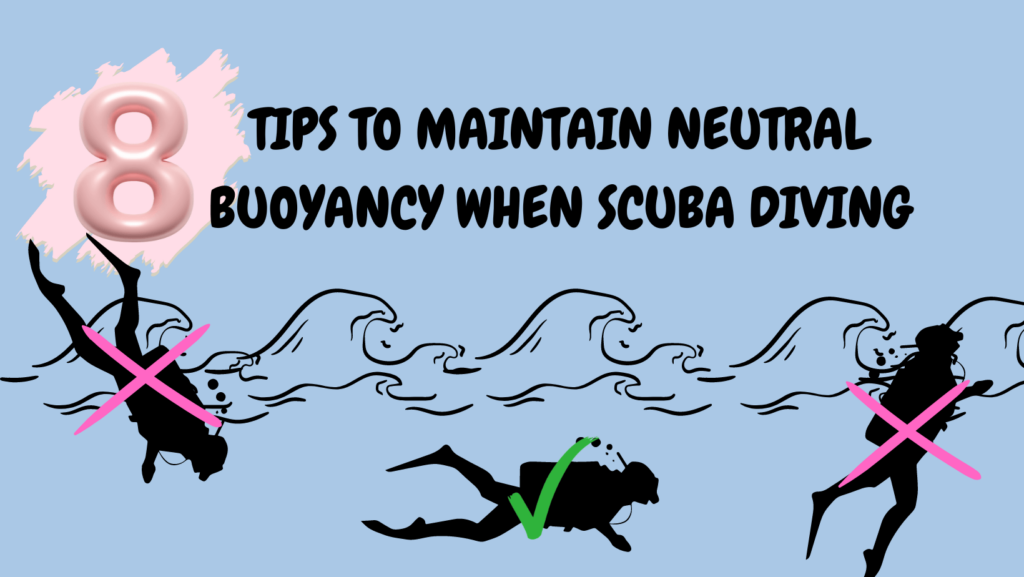The main technique to maintaining neutral buoyancy when scuba diving is practice. However, most divers only get the opportunity to dive a couple of times a year. So, here are my 8 tips to maintain neutral buoyancy when scuba diving that you can put into practice straight away!
What is neutral buoyancy?
Simply put, neutral buoyancy is when an object is neither sinking or floating, instead remaining in the middle of the water.
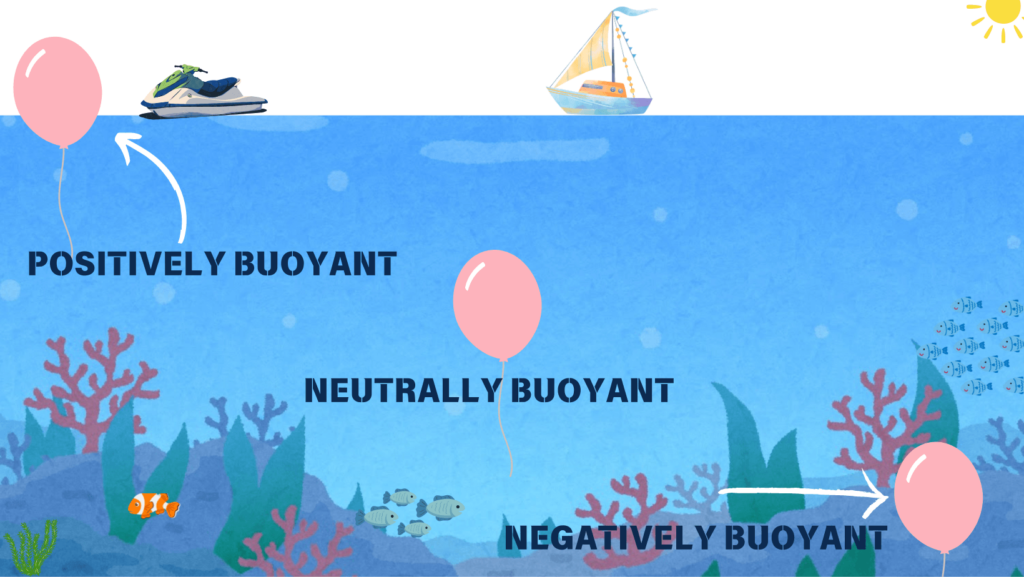
Why is maintaining neutral buoyancy important?
Maintaining neutral buoyancy when scuba diving will:
-Protect yourself from hazardous marine life or hazardous bottom compositions such as fire coral or Lionfish.
-Protect sensitive flora and fauna
-Prevent easily avoidable accidents such as a rapid ascent or missing a safety stop.
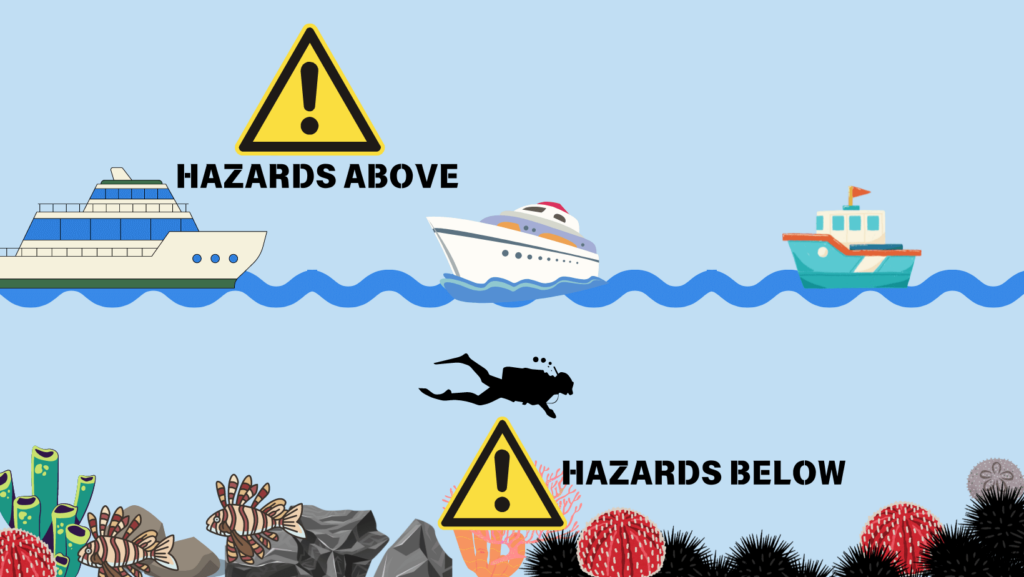
Tip 1 - Be correctly weighted to maintain neutral buoyancy:
Poorly weighted divers will find it difficult to maintain neutral buoyancy.
In order to make sure you are correctly weighted you should conduct a weight check before and after the dive.
To perform a weight check you should:
- Enter the water wearing your scuba diving equipment and swim to water that is too deep to stand.
- Breathe in and hold a normal breath of air.
- Remember to stay still and avoid treading water.
- Slowly release all air from your BCD.
- With a normal breath of air and a fully deflated BCD, you should float at eye level with the water.
- When you exhale you should slowly start to descend.
If you are descending with a fully inflated BCD please remove some weights.
If you remain on the surface with a fully deflated BCD you will need to add a couple of extra kilograms.
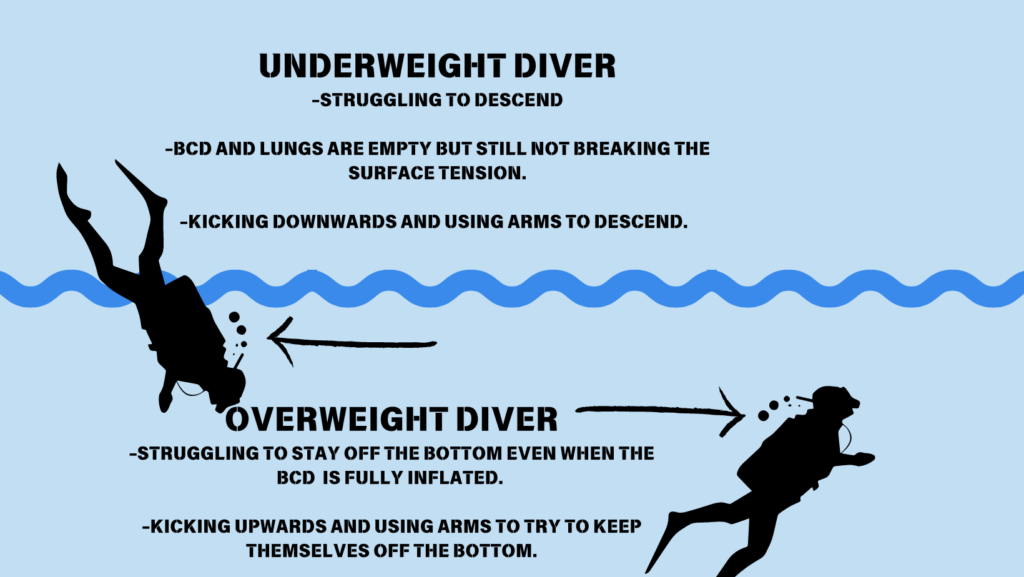
Tip 2 - Always record the number of weights you use:
Each diving location will require a different amount of weight. The amount of weight needed depends on the equipment you are using and the environment you are diving in.
By recording the weights you use on each dive in a logbook, you can use this information as a guideline when at a new diving location.
You should record:
-The exact number of weights you used during your dive.
-The size of your scuba cylinder.
-The thickness of your wetsuit and any other neoprene equipment you used.
-Environmental factors such as water salinity, temperature and visibility.
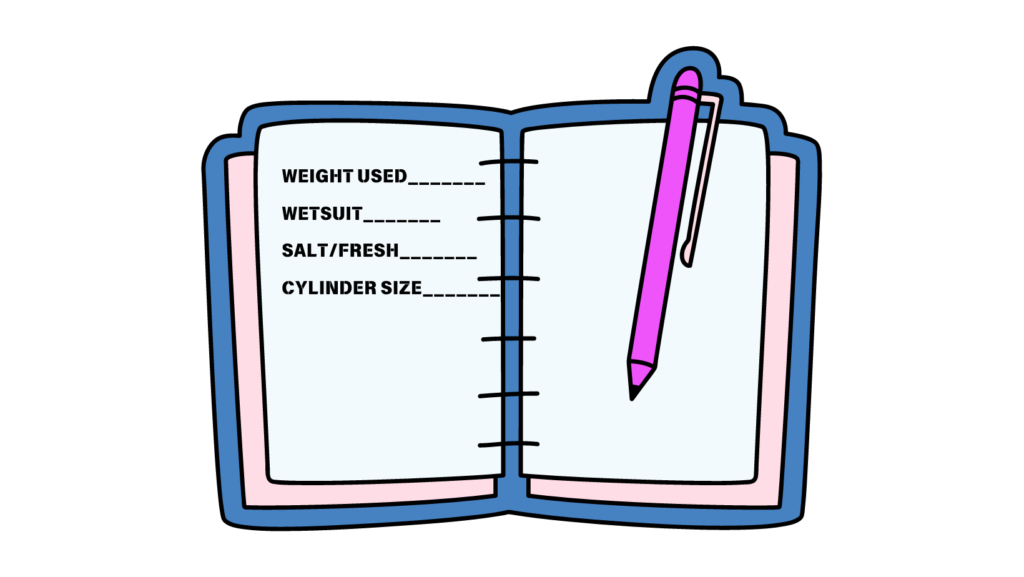
Tip 3 - Add and release air to your BCD in short bursts
When you descend you release the air from your BCD, once you break the surface tension you will then need to add some air to your BCD to keep you at your desired depth.
It is important to add and release air from your BCD slowly when underwater. By inflating too quickly you will then ascend back up to the surface and by releasing air too quickly, you will find yourself sinking to the bottom.
You should be inflating your BCD in small short bursts. By controlling your BCD slowly it will give you time to make all the necessary adjustments.
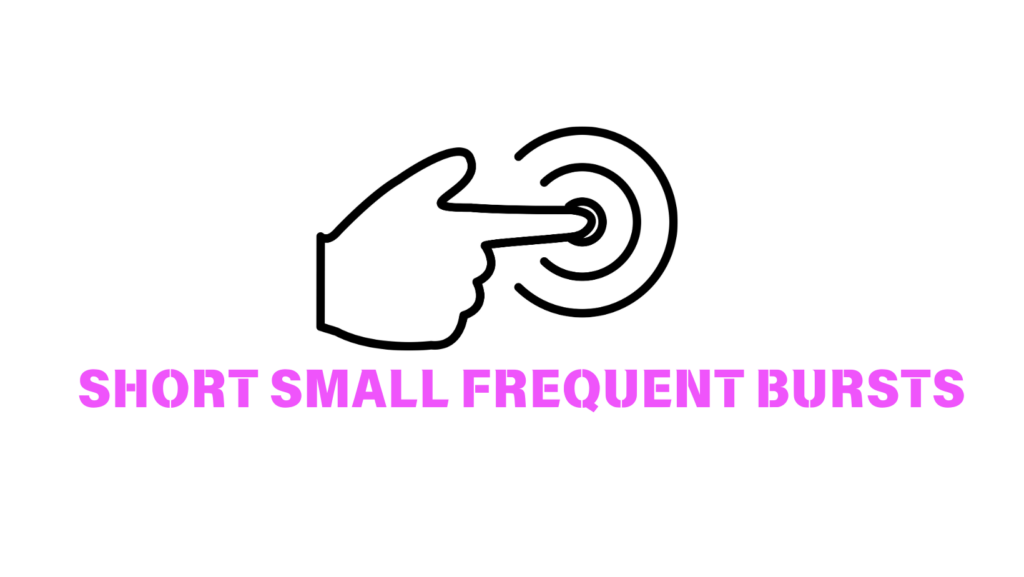
Tip 4 - Maintain proper trim while diving
Trim is a term that we use to describe your position and posture while diving.
Proper trim allows for minimal water resistance and allows divers to move through the water with little to no effort. Simply, maintaining proper trim means you are streamline in the water and when you dive you should be flat and level in the water.
In order to maintain proper trim while scuba diving, you need to:
-Keep your body in a horizontal position with your arms close to your body.
–Keep still. Swimming with your hands will decrease streamlining, is ineffective and also increases your air consumption.
-Make sure your weights are evenly distributed on your weight belt to keep you balanced.
-Make sure your scuba cylinder is secured in the correct position on your BCD. If your cylinder is positioned too low this will drag your lower body down and force your torso to an upright position.
-Use a BCD that incorporates extra features such as an Octopus and SPG holder and make sure all of your hoses are secured in their compartments. Avoid any unnecessary accessories that create drag.
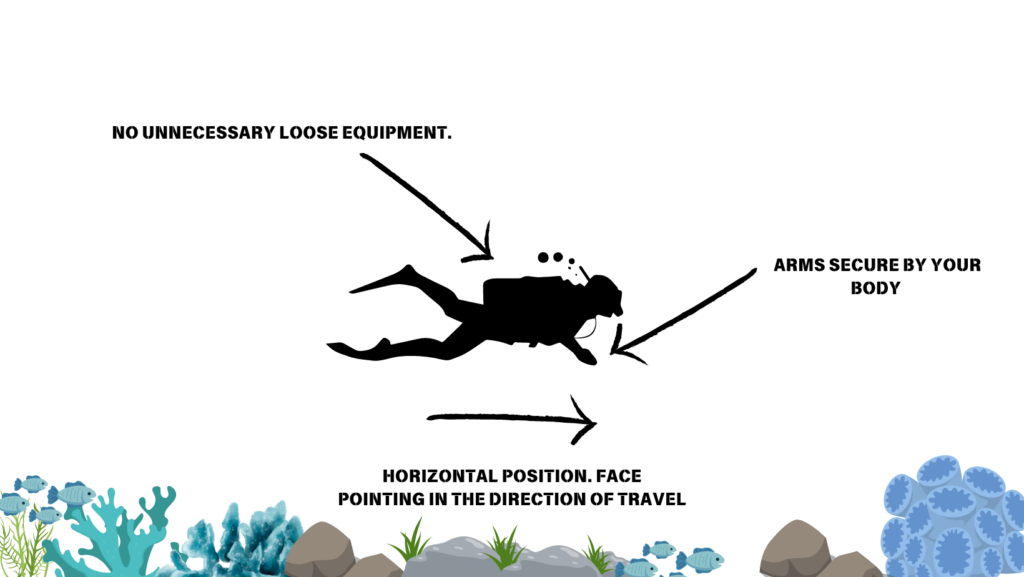
Tip 5- Use correctly fitting scuba gear
If your BCD is too large your cylinder will shift from side to side. This shifting of weight will make it difficult to maintain your streamline position. Also if your BCD is too small, it will not have adequate lifting capacity and you will become negatively buoyant.
You should try on the diving equipment before using it. When trying on a BCD make sure you are only wearing a thin T-shirt underneath and use these tips to make sure it fits correctly.
-The cummerbund should overlap a minimum of two to three inches.
-The side squeeze clips should also have a minimum of two to three inches in excess strap once they have been tightened.
-The BCD should be tight but comfortable.
Tip 6 - Make use of the dump valves on your BCD.
This tip is often overlooked and not taught by some diving instructors, but you have the two dump valves on your BCD for a reason.
The dump valves are important safety features that allow divers to release air from the BCD quickly.
Air in your BCD rises. So if you are in a position with your feet above your head, the quickest and most convenient way to release the air from your BCD is by using your back dump valve.
If you are ascending to the surface quickly, the air will rise to the top of your BCD so the quickest way to release the air is by using the top dump valve.
By utilising different methods of releasing the air from your BCD you will be able to quickly and comfortably adjust your buoyancy throughout the dive and maintain neutral buoyancy when scuba diving.
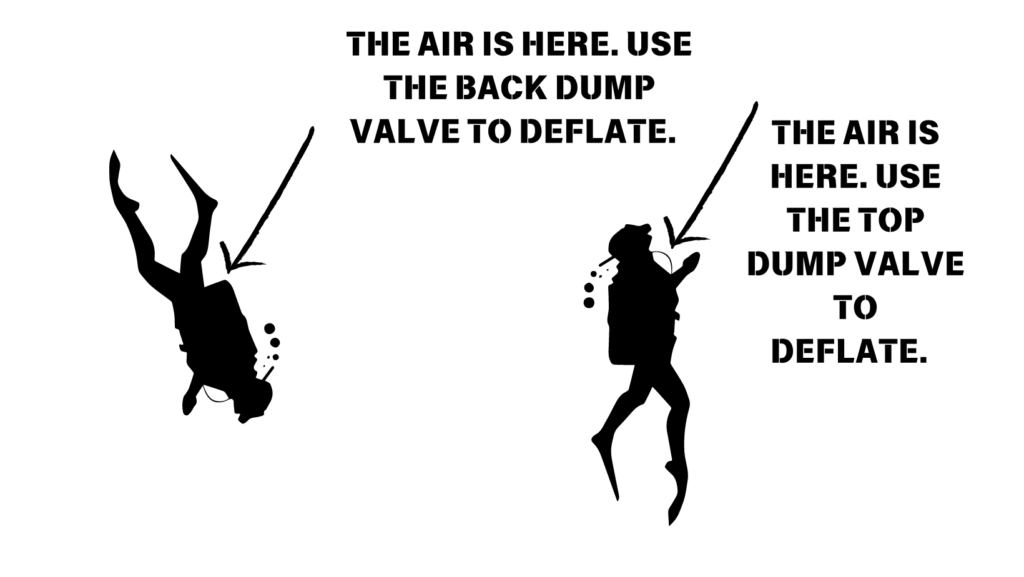
Tip 7 - Work on your breath control.
You may not have realised it yet, but your lungs act as a second BCD. The golden rule of scuba diving is to never hold your breath, however the way you breathe when diving can have a big impact. Let’s take a look at the two key principles:
- If you take a breath in, you will become more buoyant and rise.
- If you breathe out, you will become less buoyant and sink
Using your breath is an easier and quicker way to control your movement underwater. A good skill to practise using breath control when scuba diving is practising the fin pivot skill.
The fin pivot skill demonstrates the effect our lungs’ volume has on our buoyancy.
Here is how to perform the PADI fin-pivot skill:
1.In confined water (water shallow enough to stand up in) fully deflate your BCD using your low pressure inflator hose.
2. Lie down on the bottom and keep your knees straight.
3.Using your regulator, take a breath in. As you take a breath your torso should rise. Keep your fins on the ground.
4.If you do not rise, add a small amount of air into your BCD using your low pressure inflator hose.
5.Take a breath in again and your torso would rise
6.Once you rise, then exhale and you should descend.
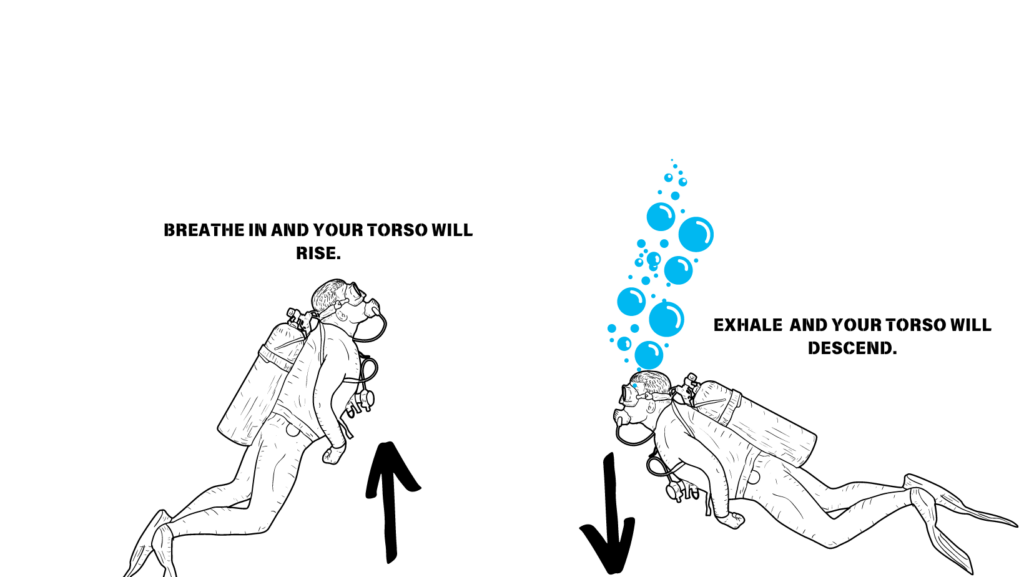
Tip 7 - Anticipate when you will need to inflate and deflate your BCD.
As you will have learnt during your PADI Open water course, air expands and compresses in our equipment depending on our depth.
So when you are diving, try to anticipate when you will need to inflate and deflate your BCD so you can prepare in advance.
For example:
-If you are descending or diving deeper you know you will need to add more air to your BCD to maintain neutral buoyancy, so get ready with your inflator hose to add air when necessary.
-If you are ascending or diving over rocks or wrecks you know that you will need to deflate your BCD. So get into the correct position and lift your inflator hose ready to deflate or get your top dump valve ready.
By trying to think and anticipate when you will need to inflate and deflate, this will become second nature to you and neutral buoyancy will become easy to maintain.
Don’t wait until the last minute, start to prepare in advance.
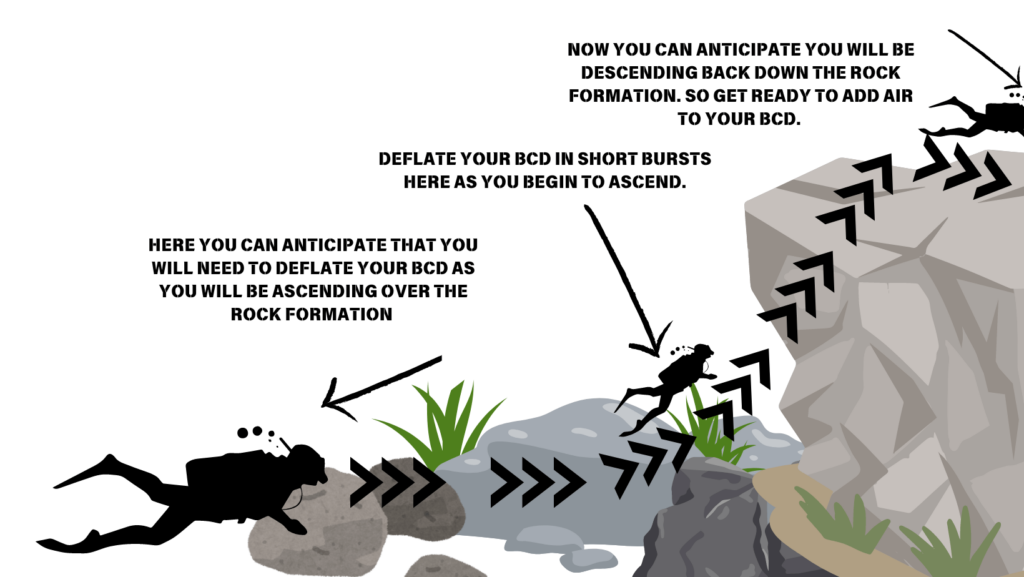
As with all scuba diving skills practice makes perfect, but if you put these 8 tips into practice straight away, you will notice a huge difference in your ability to maintain neutral buoyancy straight away!

